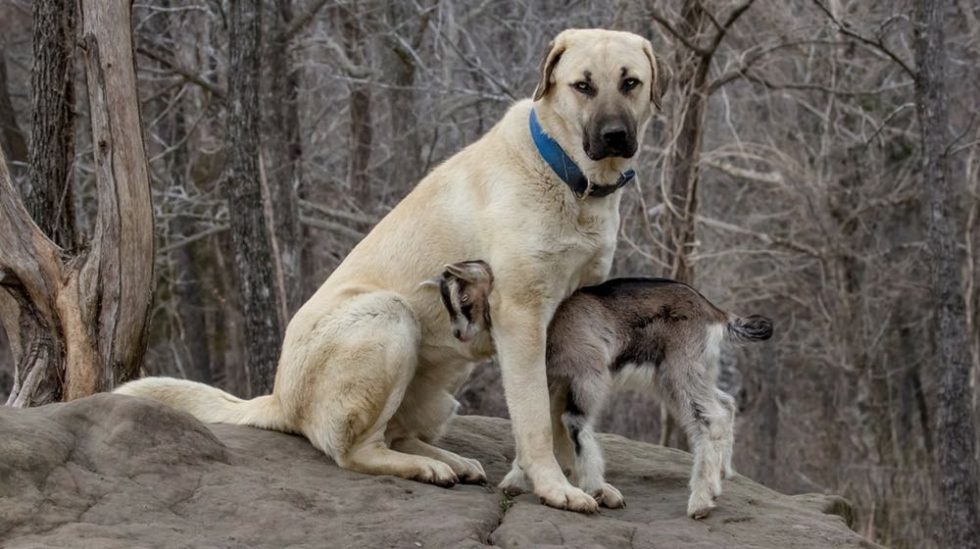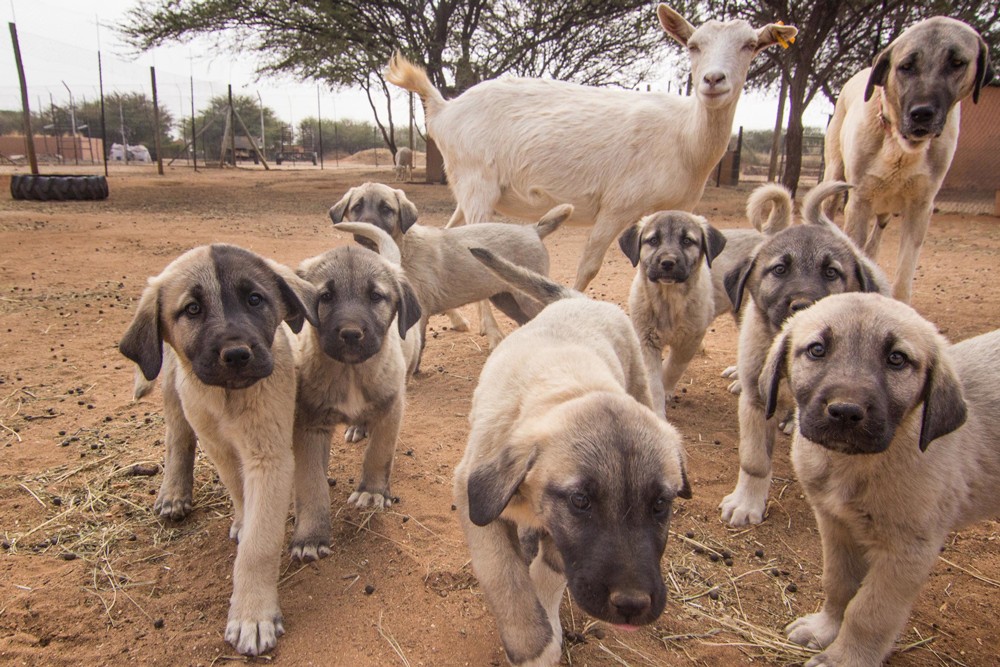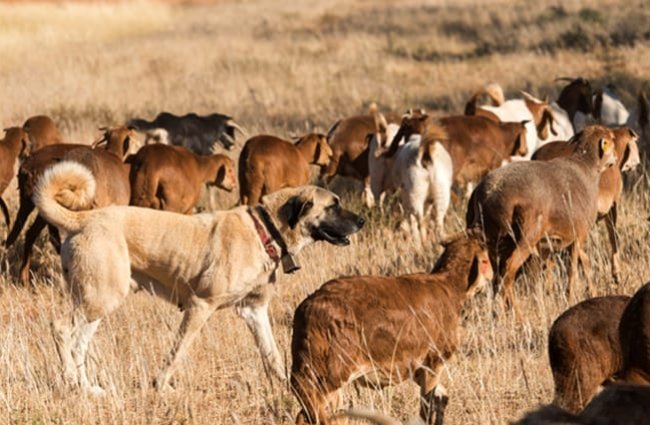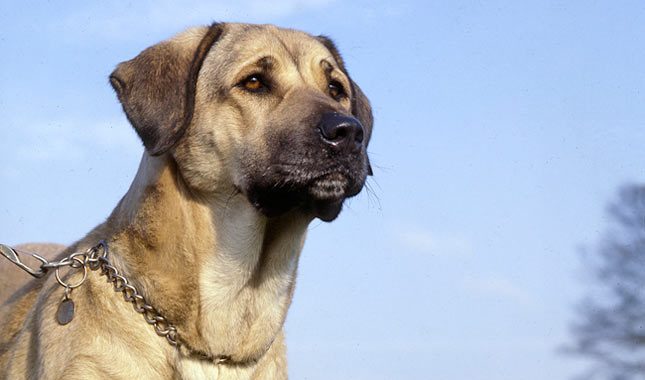Other names: Karabaş (Karabash), Anadolulu Karabaş (Anatolian Karabash), Turkish Shepherd Dog, Kangal.
The Anatolian Shepherd Dog is a breed of dog that originated in Turkey, named after the peninsula of Anatolia which forms a large portion of Turkey’s national territory. The dog is rugged, large, and very strong, with good sight and hearing that allow it to protect livestock. With its high speed and agility, it can run down a predator with great efficiency. Historically, it has been treated as a separate breed from the Kangal Shepherd Dog by many canine registries but is now generally treated as part of the same breed population.

History
The Karabaş (Karabash, ‘Blackhead’) is descended from ancient livestock guardian dog types that migrated with the transhumance, guarding flocks of sheep from wolves and cheetahs. Dogs of this type probably existed 6,000 years ago in what is now Turkey.
Anatolian Shepherd Dogs are members of a very old breed, probably descended from powerful hunting dogs from Mesopotamia. This breed was developed over time to meet a specific set of circumstances. The most formative were climate (very hot, dry summers and very cold winters), lifestyle (sedentary, semi-nomadic, and nomadic) and duties (guarding flocks moving great distances on the Central Anatolian Plateau).
Anatolian Shepherds are still used to guard livestock. This dog is guarding a goatherd in the rural USA.

In the 1970s, breeders in the West became interested in these dogs and began developing the landrace natural breeds as modern breeds by documenting their descent from particular ancestors and writing breed standards. The Anatolian Shepherd Dog was imported from central Turkey into the United Kingdom by author and archaeologist Charmian Hussey.
Australia registered the Anatolian Shepherd Dog breed in 1985, when it was imported as a guard dog for livestock, people, and property. Australia’s expansive sheep and goat enterprises contributed to the breed’s acceptance as a livestock guardian dog beyond Turkey and developed the sheep and goat guard dog of the Turkish Shepherd into an imposing guard dog of livestock and farm assets for Agricultural and Farming Industry. The working conditions and requirements of the dogs in Australia and the assets of Australian farmers are very different from the generally impoverished shepherd in Turkey and his herd of goats and sheep. Australian farmland is fenced, and the dogs are required to protect valuable assets against four- and two-legged threats.

Appearance
The general appearance of the Anatolian Shepherd Dog is a tall, rugged, and powerful livestock guardian dog with a dense double coat, a broad, strong head, well-developed muscular shoulders, and a long tail with a slight curl (reaching to the hock) that is carried high and curled over the dog’s back when the dog is alert.
The physique embodies balance and strength. Movement of the Anatolian Shepherd Dog should be supple and powerful. A low head carriage, which shows the head, neck, and topline being level when moving – creating the impression that the dog is stalking – is an important characteristic of the breed.
As with many breeds, several breed standards exist for the Anatolian Shepherd Dog, so some variance is seen in the described size and weight. They weigh between 40 and 70 kg (90 and 150 lb), with females smaller and males larger. The coat may be any colour, although most common are white cream, “sesame”, and white with large coloured spots that do not cover more than 30% of the body. Known as piebald, these colours may or may not be accompanied by a black mask and/or ears.
They have a thick, double coat that is somewhat wiry and needs to be brushed one or two times a week in warm weather due to excessive shedding. They have very thick hair on their necks to protect their throats. They look as if they are heavier than they are, due to the thick coat.
